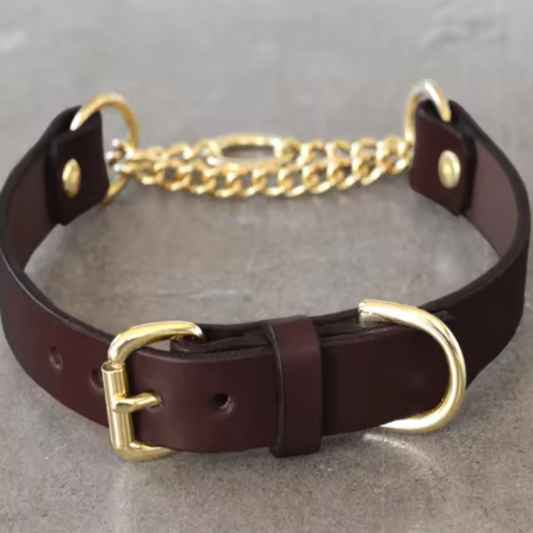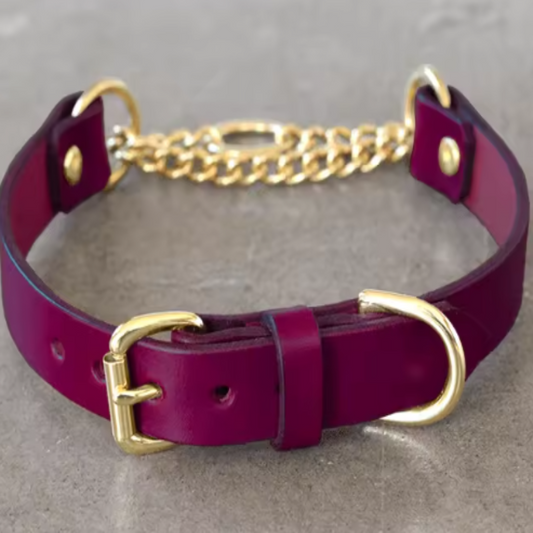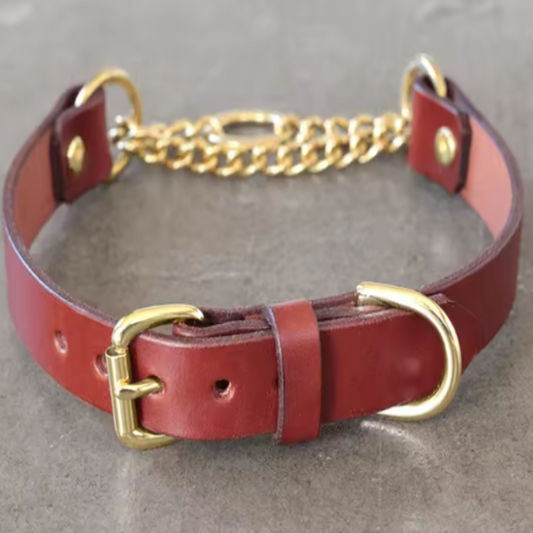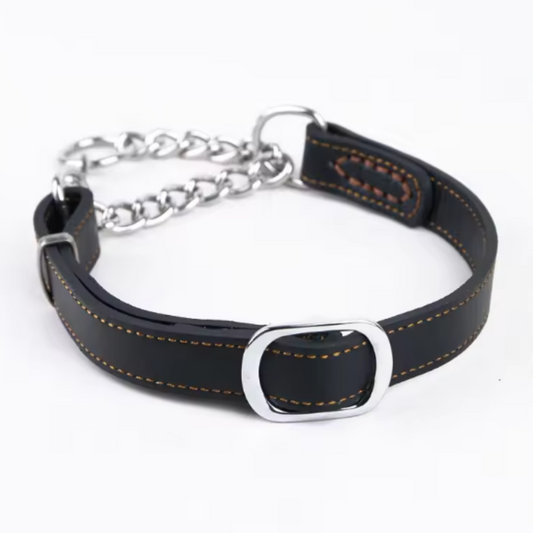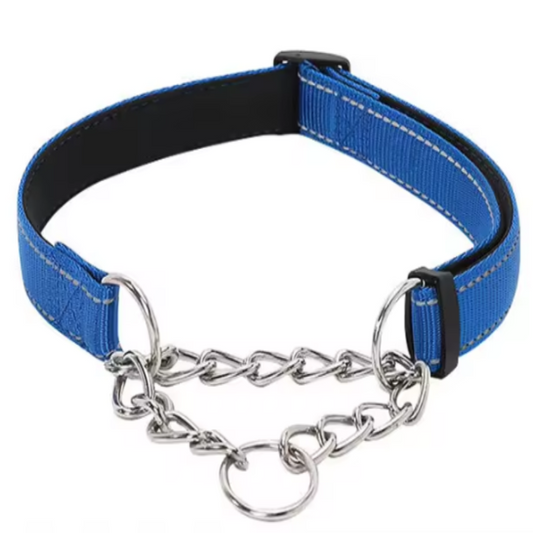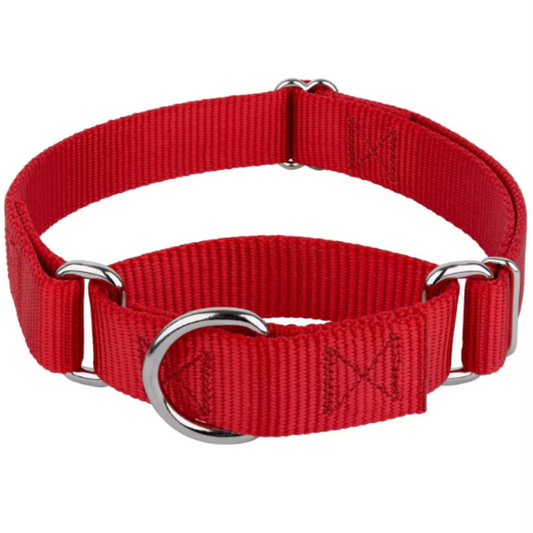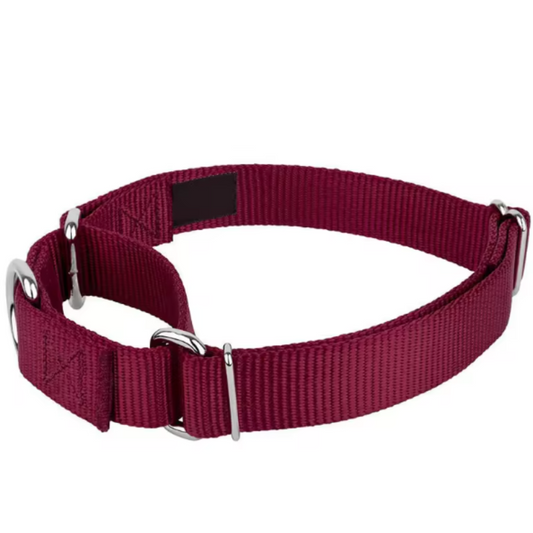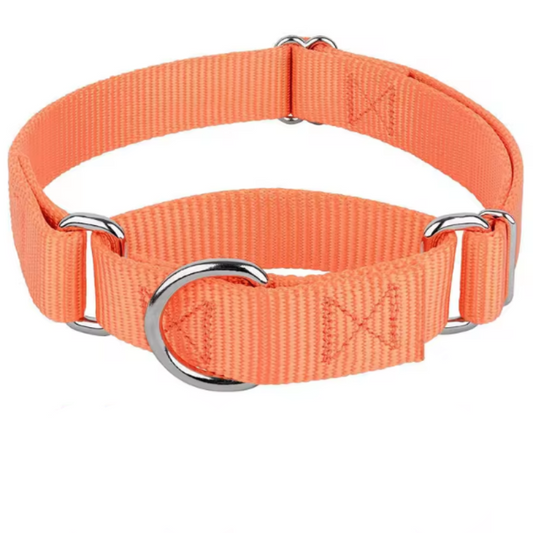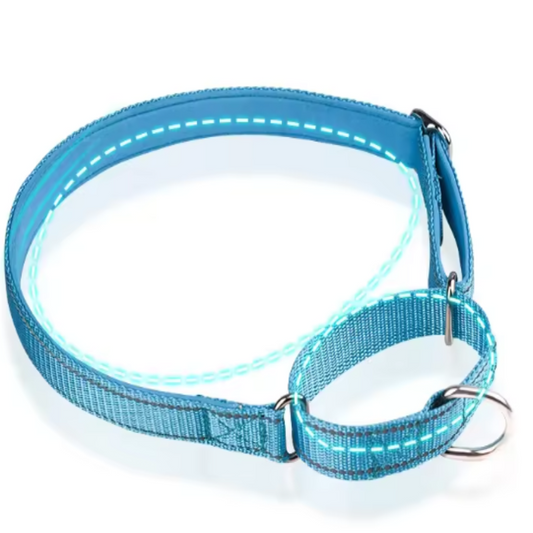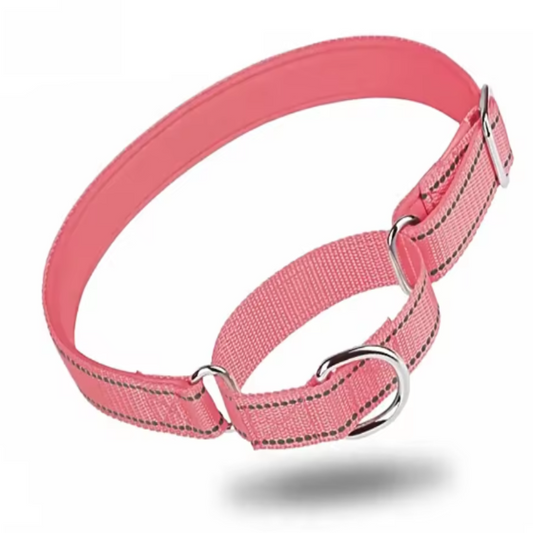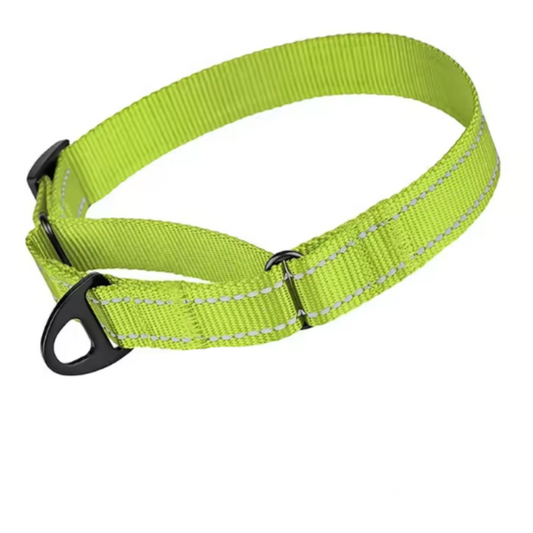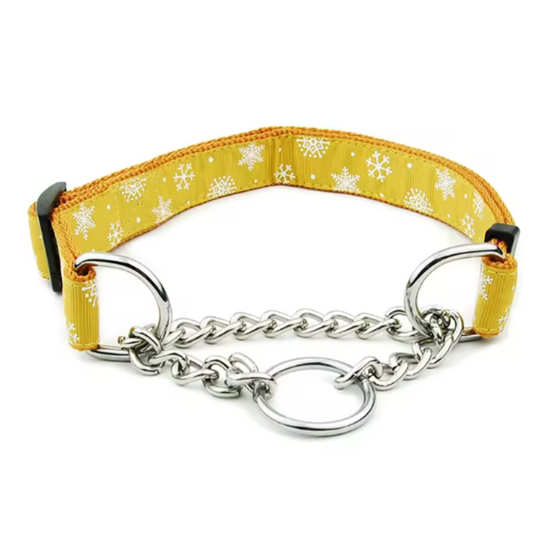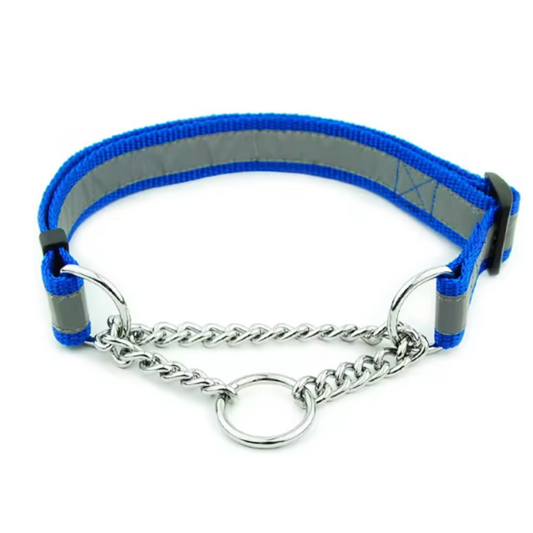Martingale dog collars, often referred to as half-choke collars, are a popular option among dog owners looking for a blend of security and comfort. Unlike traditional flat collars, martingales are designed to tighten slightly when your dog pulls, ensuring that the collar remains snug without causing harm. This unique design makes them particularly beneficial for breeds with narrow heads, as they prevent the collar from slipping off during walks or training sessions. However, it’s essential to understand how they function and when to use them effectively.
Understanding Martingale Collars
The martingale collar consists of two loops: one that goes around the dog’s neck and a second, adjustable loop that tightens when the dog pulls. Unlike choke collars, which can apply excessive pressure and pose risks to a dog’s trachea, martingales provide a gentler form of control. This collar type does not excessively restrict the dog’s neck; it simply offers enough tension to discourage pulling without causing pain.
Martingales are particularly useful in situations where your dog might become excited or anxious, such as during trips to the vet or on busy streets. The collar remains loose under normal conditions, allowing for comfortable wear. However, when your dog begins to pull, the collar tightens slightly, providing a clear cue to your pet without the harshness associated with prong or choke collars.
The Misconceptions Around Martingale Collars
While martingale collars are effective for many dog owners, it’s crucial to address common misconceptions about their use. Some believe that martingales can replace proper training techniques for loose leash walking. This is not the case. While the collar does provide some control, it is not a substitute for positive reinforcement training methods. Martingales do not inherently improve a dog’s behavior; they are simply a tool to help manage pulling.
It’s important to note that martingale collars do not exert less pressure on a dog’s neck than a flat collar once tightened. While they may offer a gentler alternative to choke collars, they function similarly to flat collars when fully tightened. This means that if your dog continues to pull, the pressure can become uncomfortable. Understanding this distinction is vital for responsible collar use.
Correct Usage of Martingale Collars
To ensure your martingale collar fits correctly, you should follow these steps:
-
Fit the Collar Properly: Start by placing the collar around your dog’s neck and using the adjustable buckle to tighten it until you can comfortably slip a flat hand underneath. This ensures that the collar is snug but not overly tight.
-
Observe the Tightening Mechanism: When you attach the leash and give a gentle tug, the collar should tighten slightly without constricting the dog’s airway. If the collar is too loose, it may slip over your dog’s head during moments of excitement, and if it’s too tight, it can cause discomfort.
-
Monitor Your Dog's Behavior: While martingales can help manage pulling, they are not training devices. If your dog continues to pull, focus on teaching them proper leash manners through positive reinforcement training techniques.
Advantages of Martingale Collars
-
Versatility: Martingale collars are suitable for various dog breeds and sizes, making them a flexible choice for pet owners. They can accommodate everything from small terriers to larger breeds that are prone to escaping their collars.
-
Safety: Unlike flat collars that can easily slip off during moments of panic, martingales offer additional security by preventing your dog from backing out of the collar. This feature can be particularly beneficial during stressful situations, such as visits to the groomer or vet.
-
Comfortable Design: The gentle tightening mechanism ensures that your dog is not choked, making martingales one of the most humane collar options available. This design promotes a positive walking experience for both you and your dog.
The Right Material for Your Martingale Collar
Martingale collars come in various materials, including nylon, leather, and even chain. Each material has its advantages, and the choice ultimately depends on your dog’s needs and preferences:
-
Nylon: Lightweight and durable, nylon martingale collars are easy to clean and come in various colors and patterns, allowing for personalization.
-
Leather: For a more classic and stylish look, leather martingale collars offer durability and comfort. They tend to soften over time, making them increasingly comfortable for your dog.
-
Chain: Chain martingales can be particularly useful for strong pullers, as they can offer more immediate feedback when the collar tightens. However, they may not be as comfortable for all dogs, so consider your pet’s sensitivity.
Final Thoughts
Martingale collars are a popular choice among dog owners seeking a balance between control and comfort. While they do not replace proper training techniques, they can be a valuable tool in managing your dog’s behavior, especially for those prone to escaping their collars. When used correctly, martingale collars offer a safe and humane option for keeping your dog secure during walks and training sessions.
Remember, no collar can replace the bond built through training and positive reinforcement. Pair your martingale collar with effective training methods for the best results, ensuring a happy and well-adjusted dog. Whether you are looking for a collar to manage an excitable puppy or a secure option for a larger breed, martingale collars provide a reliable and stylish solution for every dog owner.

